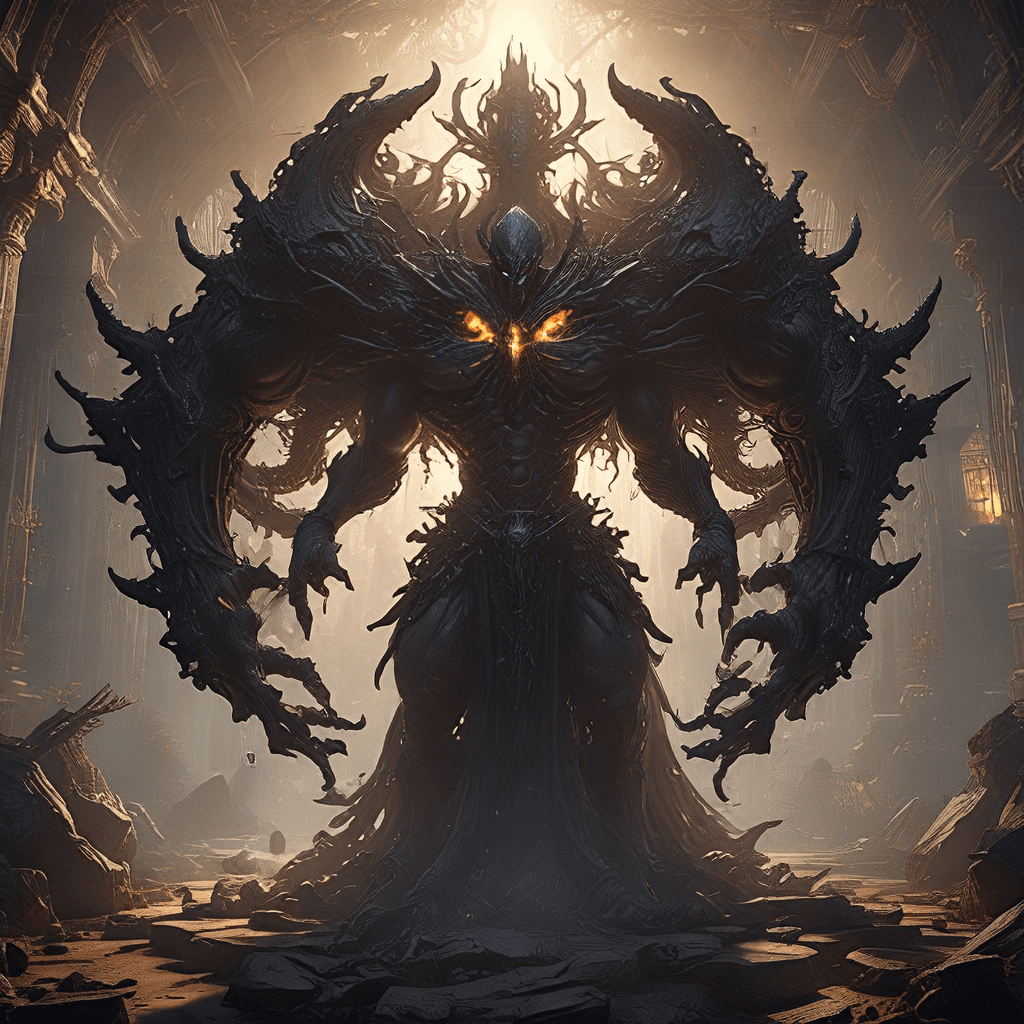The Shadow of Chaos: The Threat to Creation
I. The Cosmic Tapestry: Order and Harmony
Imagine a vast, intricate tapestry woven with threads of light, where every element is interconnected and perfectly balanced. This is the essence of creation, a harmonious symphony of existence where order reigns supreme. The universe, from the smallest atom to the grandest galaxy, operates according to fundamental laws, a cosmic dance of balance and equilibrium. This inherent order ensures the stability and sustainability of the cosmos, safeguarding the delicate balance of life and existence. The concept of “cosmos,” itself a reflection of this harmonious order, signifies a state of unity and interconnectedness, where everything has its place and purpose.
II. The Genesis of Chaos: A Disruption of Order
Yet, within this tapestry of order, a counterforce emerges, a disruptive element known as chaos. Unlike order, which thrives on harmony and predictability, chaos embodies disharmony, entropy, and unpredictability. It disrupts the balance, throws things into turmoil, and challenges the very fabric of existence. Chaos can manifest in various forms: internal conflicts arising from clashing ideologies, beliefs, and values, or external forces like natural disasters, cosmic events, and environmental disruption. It can also stem from the influence of malevolent entities, powerful beings intent on disrupting the natural order of creation.
III. The Seeds of Discord: Internal Conflicts
Internal conflicts, often rooted in the human experience, are a potent source of chaos. The struggle for power, driven by greed, ego, and the desire to control, can tear apart communities and societies, sowing seeds of division and discord. Differences in belief systems, ethical values, and political ideologies can lead to friction and animosity, creating a fertile ground for chaos to flourish. When individuals fail to embrace empathy and understanding, the temptation to manipulate and exploit others for personal gain can lead to conflict and ultimately, the unraveling of the social fabric.
IV. The Echoes of Discord: External Forces
External forces, often beyond human control, can also disrupt the equilibrium of creation. Natural disasters like earthquakes, floods, and volcanic eruptions serve as stark reminders of nature’s power and the fragility of life. Cosmic events, such as supernovae and gamma-ray bursts, can have devastating consequences for entire planetary systems. Environmental disruption, caused by human activities, can alter ecosystems, disrupt natural cycles, and threaten the very foundation of life. The consequences of these external forces can be devastating, leading to widespread destruction, displacement, and suffering, underscoring the precarious balance of existence and the potential for chaos to disrupt the delicate harmony of creation.
V. The Erosion of Harmony: The Existential Threat
The most profound threat to creation is the ultimate annihilation of existence. This existential threat, often described as “entropy,” represents the relentless decay and decline of all things, a slow but inevitable process that leads to the eventual dissolution of the universe. The concept of entropy embodies the inability to create perfect order due to the constant loss of energy, a fundamental principle of physics that underscores the inherent limitations of any ordered system, even on a cosmic scale. This inevitable decay poses a philosophical question: what is the ultimate fate of creation? Does the universe inevitably succumb to entropy, or is there a possibility of renewal and rebirth?
VI. The Guardians of Order: Defending Creation
In the face of chaos, it is crucial to embrace the role of guardians of order, individuals, communities, and institutions dedicated to preserving the balance and harmony of creation. Unity, cooperation, and collective action are essential tools for combating the forces of chaos. Through shared purpose and coordinated efforts, individuals can overcome internal conflicts and work together to heal the wounds of division. Knowledge, wisdom, and compassion serve as guiding lights, illuminating the path toward understanding and resolution. The power of empathy, coupled with the pursuit of knowledge, can transform conflict into cooperation, and ultimately contribute to the preservation of the delicate balance of existence.
VII. The Quest for Balance: Reconciling Order and Chaos
The quest for balance involves recognizing chaos as a necessary counterforce to order, a potential catalyst for renewal and rebirth. Chaos can force us to adapt, innovate, and evolve, to find new ways of being and to overcome the challenges that threaten our existence. Adaptability and resilience are essential qualities for navigating the ebb and flow of chaos, for embracing the unpredictability and disruption that are inherent parts of the cosmic dance. Embracing change, learning from adversity, and fostering resilience are key to navigating the chaotic forces that contribute to the dynamism and evolution of creation.
VIII. The Art of Transformation: Navigating the Shadow
The journey through chaos is ultimately a process of individuation and spiritual growth, a path of self-discovery and transformation. By confronting the shadows within and facing the challenges of the external world, individuals can emerge stronger, wiser, and more resilient. The ability to navigate the shadow of chaos requires courage, flexibility, and an unwavering commitment to the principles of balance and harmony. It is a continuous process of learning, adapting, and evolving, ultimately contributing to the preservation and evolution of creation itself. The journey through the shadow of chaos is not an easy one, but it is one that ultimately leads to greater understanding, wisdom, and a deeper connection to the interconnectedness of all things.



